How to Start a Podcast: A Step-by-Step Guide [2025]

Podcasting is one of the most powerful and accessible ways to share your voice, build a community, and grow your brand. As of 2025, approximately 67% of Americans have listened to a podcast, and nearly half of them tune in on a monthly basis.
This comprehensive step-by-step guide is designed to walk you through the entire podcasting process—from shaping your concept and recording your first episode to publishing, promoting, and growing your show.
1. Develop Your Podcast Concept
Starting a successful podcast begins with a strong foundation — your concept. Before you record or publish anything, it’s essential to define what your podcast is about, who it's for, how it will sound, and how often you'll release episodes .
Topic/Niche
The most successful podcasts often revolve around a clear and specific topic, it’s more effective to focus on serving a well-defined group of listeners who share a particular interest, goal, or challenge.
When selecting a topic for your podcast, ask yourself questions like:
- What am I passionate or knowledgeable about?
- Can I consistently create content on this subject over time?
- Are people already searching for or engaging with content on this topic?
Examples of focused podcast niches:
- Instead of “Fitness” → Try “Strength Training for Women Over 40”
- Instead of “Business” → Try “Freelance Marketing for Tech Startups”
Podbean Tip: Use Podbean’s Discover page or Apple Podcasts charts to explore categories and see what’s trending or underserved.
Audience
Knowing your audience is crucial for creating content that resonates and fosters loyalty. To do this, try to define your ideal listener as clearly as possible.
Consider:
- Demographics: Age, gender, location, profession
- Interests & habits: What do they listen to? What problems are they trying to solve?
- Goals & challenges: What motivates them? What do they want to learn or feel from your podcast?
Once you have a clear listener profile, write it down and refer back to it whenever you brainstorm new content or assess your show’s tone and structure.

Format
The format you choose for your podcast will significantly influence your production workflow, your engagement style with listeners, and the amount of time you’ll need for editing.
There are several common podcast formats to consider:
- Solo show: one host delivers content (ideal for thought leadership and personal insights)
- Co-hosted format: two or more hosts engage in discussions (which adds variety and dynamic interaction)
- Interview-based podcast: hosts speak with guests each episode (perfect for expert-driven or industry-specific content)
- Narrative or scripted format: involves highly produced episodes with storytelling, narration, and sound design (great for fiction, documentaries, or investigative series).
Determine Episode Length
Podcast length doesn’t have a “one-size-fits-all” solution. The ideal duration depends on your content, your audience's preferences, and how effectively you can maintain their engagement throughout the episode.
- 10–15 minutes: Perfect for bite-sized episodes, quick news recaps, or offering tips and tricks. These shorter episodes work well when your content is more concise or focuses on a single idea.
- 20–30 minutes: A good middle ground that’s commuter-friendly and manageable for weekly content. This duration allows for a deeper dive into topics without overwhelming the listener.
- 45–60+ minutes: Ideal for long-form interviews, in-depth discussions, or storytelling formats. These episodes provide enough time to explore complex topics or have detailed conversations with guests.
Choose a Publishing Frequency
A regular release schedule helps keep your show top-of-mind for listeners, while also allowing you to manage your time effectively. Here are some common options for podcast publishing frequency:
- Weekly: This is the most common publishing schedule. It helps keep your podcast fresh and maintains your presence in listeners' minds, making it ideal for building a steady audience.
- Biweekly: Publishing every two weeks allows for more manageable content creation and gives you time to refine each episode without compromising on quality.
- Monthly: This schedule is suitable for highly produced shows or long-form content that requires more preparation.
- Seasonal: For narrative or story-driven podcasts, a seasonal approach can be effective. Plan themed seasons with breaks in between.
Before you launch your podcast, consider creating a 3-month content plan , it will give you a roadmap to follow and help you stay ahead of schedule.
Podbean Tip: Use Podbean’s Scheduled Publishing to plan your episode releases in advance.
Define the Tone and Style
Your podcast’s tone plays a crucial role in setting expectations and building a connection with your audience.
Choose a tone that fits your brand and resonates with your listeners:
- Informative and professional
- Conversational and casual
- Funny and sarcastic
- Inspiring and motivational
- Empathetic and supportive
To ensure your podcast reflects your authentic voice, consider recording test clips to experiment with different styles and find the one that feels most natural.
Name Your Podcast
Your podcast name is one of the first things people notice, and it plays a crucial role in whether or not they decide to listen. The name should be:
- Clear: It should immediately give listeners an idea of what the show is about.
- Searchable: Include keywords that potential listeners might use when searching for shows in your niche.
- Memorable: Choose a name that’s easy to spell, pronounce, and remember.
What to Avoid:
- Obscure Puns: While creative, they can be confusing or hard to understand for new listeners.
- Long or Confusing Phrases: Keep it short and simple to ensure your name is easy to remember.
- Names Already in Use: Make sure your name isn’t already taken by another podcast or brand.
Start by searching your potential name on platforms like Apple Podcasts, Spotify, and Google to ensure that it’s not already in use by another podcast or brand. This helps avoid confusion and potential copyright issues.
Example: Instead of "The Health Show," try something more targeted like "Daily Habits for Healthy Living."
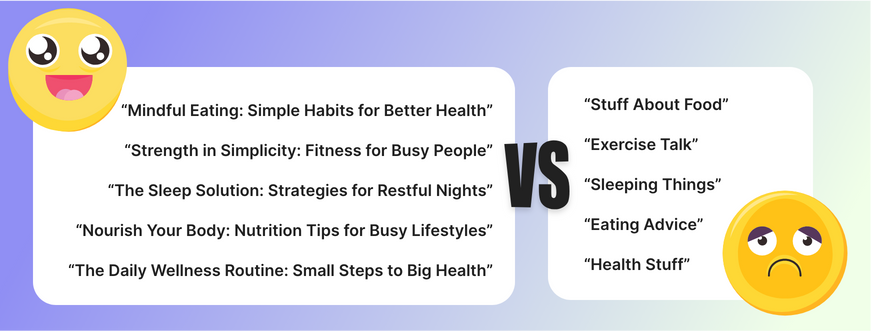
2. Get Your Equipment and Recording Setup
Microphone
Clear, professional-sounding audio helps make your podcast more engaging and enjoyable for listeners.
There are two main types of microphones suitable for podcasting: USB microphones and XLR microphones . Here’s a breakdown to help you choose the right one:
USB Microphones (Recommended for Beginners)
- Simplicity: Plug-and-play setup—connects directly to your computer or mobile device.
- Affordability: These microphones are usually more budget-friendly and don’t require extra equipment like an audio interface.
-
Popular Choices:
- Blue Yeti : Known for excellent sound quality and versatility.
- Samson Q2U : Affordable and offers both USB and XLR outputs for flexibility.
- Audio-Technica ATR2100x : A reliable, cost-effective option with good sound quality.
XLR Microphones (Recommended for Intermediate and Advanced Users)
- Professional Quality: Requires an audio interface or mixer, but offers superior sound quality.
- Flexibility: XLR microphones allow for more control over your audio setup.
-
Popular Choices:
- Shure SM7B : A high-quality microphone favored by many podcasters for its rich sound.
- Rode PodMic : A durable, well-designed microphone that produces clear, professional sound.
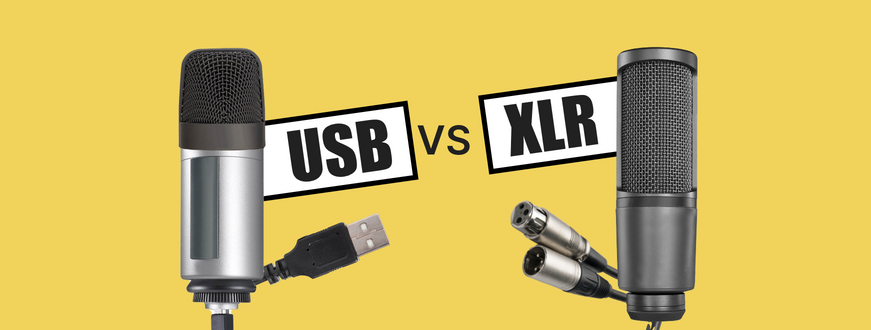
Headphones
A good pair of headphones allows you to monitor your audio clearly, catch issues early, and improve editing accuracy.
For podcasting, closed-back headphones are recommended because they isolate audio, minimize leakage, and provide accurate monitoring. An over-ear design is also preferable for comfort during longer podcasting sessions.
Popular headphones for podcasting in 2025 include:
- Sony MDR-7506 , known for its affordability, durability, and excellent sound isolation
- Audio-Technica M20x , which offers premium sound quality and comfort
- Beyerdynamic DT 770 Pro , providing superb audio detail and long-term comfort.
For more detailed headphone reviews, recommendations, and buying tips specifically tailored to podcasting needs, please explore our comprehensive guide on headphones for podcasting .
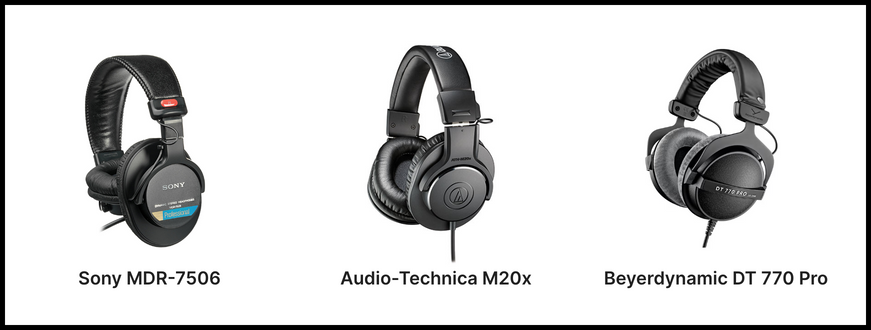
3. Recording Software for Your Podcast
When it comes to recording your podcast, having the right software can make all the difference in the quality and efficiency of your process.
Podbean App
Podbean offers an intuitive built-in recording feature that allows you to record directly from your mobile device or desktop.
This function is perfect for podcasters who want a simple and reliable solution for creating episodes, without needing additional recording software or hardware.
Features of Podbean:
- Built-in Recording: Podbean offers an easy-to-use built-in recording function, allowing podcasters to record directly within the platform.
- Group & Live Recording: You can host live recording sessions and even engage with your audience in real-time.
- Remote Recording: Allows you to record remotely with other participants, making it easy to collaborate with guests who are in different locations.
- Audio Editing: : Trim, cut, and make simple edits without needing advanced editing software.
- Integrated Publishing: After recording, you can immediately publish your episode to your podcast feed.
Descript
Descript is an all-in-one audio editing tool available for both Mac and Windows. It allows users to record, transcribe, mix, and edit audio files as easily as editing a text document.
Features of Descript:
- Overdub: Text-to-speech voice cloning technology allows users to replace or correct spoken words by typing the desired text in the original voice.
- Automatic Filler Word Removal: Descript automatically detects and removes filler words such as "um" and "uh" to enhance the clarity of the recording.
- Multi-Track Editing: Users can edit multiple audio tracks simultaneously, making it ideal for podcasts or interviews with multiple speakers.
- Transcription: Descript provides automatic transcription of audio, turning spoken content into text for easier editing and reference.
Below is a list of additional podcasting software tools that can enhance your recording and editing experience:
- Riverside.fm: offers high-quality remote podcast recording with separate tracks for each participant.
- Audacity: A free, open-source, cross-platform audio software that allows for powerful editing, audio recording, and mixing.
- Adobe Audition: A professional-grade audio editing software, offering advanced features like noise reduction, multi-track editing, and seamless integration with other Adobe products.
- Zoom: While primarily known as a video conferencing tool, Zoom is often used for remote podcast recordings, providing easy ways to record interviews.
- SquadCast: A remote recording tool that captures high-quality audio with participants across the globe. It's known for its reliability in live sessions.
- Zencastr: A browser-based remote recording tool designed specifically for podcasters, offering high-quality, multi-track audio recording.
4. Record Your First Episode
Recording your first podcast episode is an exciting step! This section will guide you through each stage of producing a clear, engaging episode using Podbean’s powerful recording tools.

Write an Outline or Script
Creating a structured outline or script is crucial for ensuring your podcast flows smoothly and maintains listener engagement.
If you prefer a scripted format , you can write out exactly what you plan to say word-for-word, providing a detailed guide for your delivery.
Alternatively, a conversational format allows you to prepare key bullet points or talking points, offering more flexibility while still maintaining structure.
Practice Your Delivery
Before hitting record, rehearse your script or talking points aloud several times. Practicing helps you become familiar with your content, improves your confidence, and results in a more natural-sounding delivery.
As you practice, listen carefully to your tone and pacing . Record a quick practice run to identify and improve on any repetitive phrases, awkward transitions, or unclear sentences.
Microphone Techniques
When recording, position your mouth approximately 6–8 inches (15–20 cm) away from the microphone. This distance helps avoid distortion or plosive sounds (“p” and “b” sounds) while maintaining a clear voice presence.
Speak consistently into the microphone without moving your head too much. Maintain an even, steady volume, and avoid yelling or whispering excessively.

Quiet Space
Even the best microphone cannot compensate for loud background noises or echo-filled spaces. The best recording environments are small, quiet rooms with minimal reflective surfaces.
Tips for Creating a Quiet, Professional Recording Space:
- Choose a Quiet Room: Avoid rooms near noisy appliances, street noise, or high foot-traffic areas.
- Reduce Echo: Use soft materials—carpets, rugs, curtains, blankets, or foam panels—to absorb sound.
Record a Test Track
Doing a brief test recording before your full episode helps ensure your equipment and settings are working properly.
Record 30–60 seconds of natural speech, based on what you hear, adjust your microphone positioning, input levels, or recording environment as needed for the best results.
Group Recording with Podbean
Available on both Android and iOS , the Group Recording feature supports up to seven participants per session. After recording, you’ll receive both a cloud version and individual local tracks for each speaker.
Live Recording with Podbean
You can also use the Livestream feature to record your first episode. It is perfect for spontaneous conversations, live Q&A sessions, or community engagement.
You can easily create a live show using either the Podbean app or the web platform. For step-by-step instructions, check out our guides on creating your live stream on the apps and creating your live show on the web .
5. Edit Your Episode
After recording your podcast episode, editing helps remove any mistakes, awkward pauses, filler words like ‘um’ and ‘ah,’ or unwanted background noise.
It also allows you to enhance your episode by adding intro and outro music, balancing audio levels, and ensuring your message comes across clearly.
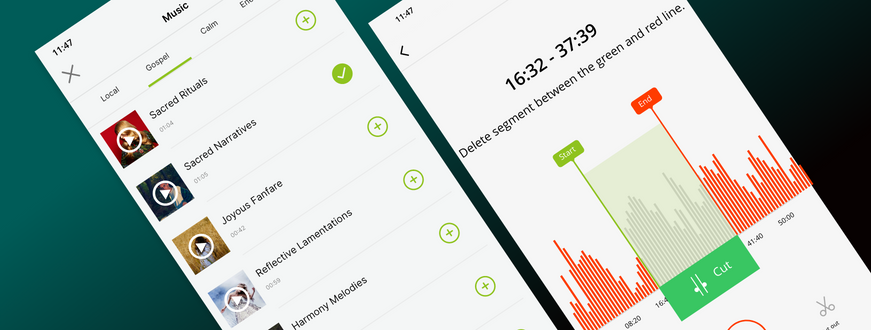
Podbean’s Editing Features
Podbean offers a simple yet powerful editing tool within its app, making it easier to fine-tune your podcast before publishing.
Here are some of the many editing tools of Podbean:
- Cut Out Unwanted Sections: Drag the wavefront or zoom in or out to easily remove any mistakes, long pauses, or irrelevant content.
- Merge Multiple Tracks: Combine multiple audio clips into a single episode, making it easy to edit or stitch together different segments.
- Add Intro and Outro Music: Insert professional-sounding intro and outro music to enhance the listening experience and provide a clear start and finish for each episode.
- Add Background Music: Subtly enhance the mood of your episode with background music, creating a more engaging atmosphere for your listeners.
Android users can select recordings from the “My Recordings” tab, while iOS users access editing similarly within their app. After making edits, preview and save your episode instantly, ensuring your podcast is quickly ready for publishing.
Podbean AI: Smart Editing and Optimization
Podbean’s AI Optimization makes optimizing your episodes easier, faster, and more efficient, allowing you to focus on creating great content while the AI handles the technical details.
- Noise Reduction: Eliminate unwanted noises from your podcast recordings, delivering a polished sound that enhances the overall listening experience.
- Intelligent Leveler: Automatically adjust volume levels between speakers, music, and speech to create a well-balanced and enjoyable listening experience.
- Cut Filler Words and Silence: Trim silent segments, pauses, and filler words such as “ah,” “uhm,” “mh,” or “ähm” for a smoother, more fluid flow.
- Filtering & AutoEQ: Remove undesirable frequencies and sibilance (De-Esser), producing clear, warm, and pleasant audio for your listeners.
- Automated Title and Show Notes: Quickly create engaging titles and descriptions.
- AI Enhanced Transcripts: Improve accessibility and SEO with accurate transcripts.
- Precisely Crafted Chapter Markers: Add chapter markers to enhance listener engagement.
Podbean AI is also built into the Podbean mobile app, both Andriod and iOS , enabling users to optimize their episodes directly from their phones.
Other Editing Software Options
If you prefer more advanced or professional editing capabilities, here are some popular podcast editing software tools:
- Audacity : A free, open-source audio editing software known for its versatility and wide range of features, including multi-track editing and effects.
- GarageBand : Apple’s free audio editing tool designed for Mac and iOS users, great for basic editing and podcast production.
- Adobe Audition : A professional-grade editing software offering advanced features like noise reduction, multi-track mixing, and audio restoration.
6. Publish Your Podcast
Choosing the right hosting platform is crucial for your podcast's success. Podbean is trusted by over 150,000 active podcasts, with more than 15.2 million episodes published and a staggering 14.3 billion downloads as of early 2025.
Podbean offers a range of powerful hosting features to help you create, publish, and grow your podcast seamlessly, including unlimited storage, easy distribution to major platforms, advanced analytics, and monetization tools.
To explore all the hosting features Podbean provides, check out Podbean’s Podcast Hosting Features .
Creating Podcast/ Episode Artwork
Your artwork is often the first visual impression potential listeners have.
Podcast Cover Art Specifications:
- Size: Between 1400 and 2048 pixels square
- Resolution: 72 dpi minimum.
- File Type: JPG or PNG.
- Color Mode: RGB color space.
Tips to Make Your Podcast Artwork Stand Out:
- Simple and Clear: Keep your design clean and uncluttered. Avoid overly complex or busy designs.
- Readable at Small Sizes: Ensure text is large, bold, and legible even when scaled down to thumbnail size.
- Colors and Contrast: Bright, contrasting colors help your artwork pop against backgrounds of podcast apps (often dark or white backgrounds).
- Brand Consistency: Choose colors, fonts, and styles aligned with your overall brand and future promotional materials.
Tools and Software to Help Design Your Podcast Artwork
You don’t need to be a graphic designer to create professional-looking podcast artwork. Here are tools for all skill levels:
-
Beginner-friendly tools:
- Canva: Templates, easy drag-and-drop functionality, beginner-friendly.
- Adobe Express: Similar to Canva with Adobe’s premium quality design tools.
-
Intermediate to advanced:
- Adobe Photoshop: Professional graphic design software for precise and detailed artwork.
- Affinity Designer: Powerful, affordable alternative to Photoshop.
Writing Your Podcast/ Episode Description
Your show notes serve as the trailer to your show, offering a compelling introduction to attract new listeners.
Start by briefly introducing your podcast or episode to build credibility.
Next, clearly explain what listeners will learn or gain, emphasizing the value or benefits they can expect.
Finally, include a call-to-action (CTA) , encouraging listeners to subscribe, share the podcast, or visit your website for more information. This description is your chance to hook your audience and motivate them to engage with your content.
Example Structure:
"Welcome to [Podcast Name], where [Host Name/Description] dives deep into [specific topic or niche]. Each week we cover [types of content or episodes] to help you [benefit to the listener]. New episodes every [frequency]. Follow now and never miss an episode!"
Exploring Advanced Options
Podbean provides advanced publishing options to optimize listener experience:
- Episode type: Choose between full episodes and trailers.
- Explicit Content Label: Clearly indicate if your episode contains explicit content to adhere to platform standards.
- Episode Seasons and Numbers: Organize episodes effectively by assigning season and episode numbers, aiding listener navigation.
7. Distribute to Podcast Directories
Podbean simplifies the distribution process by offering automatic submission to many top directories.
From your Podbean dashboard, you can quickly access settings to distribute your podcast across platforms such as Apple Podcasts, Spotify, Amazon Music, iHeartRadio, and more.
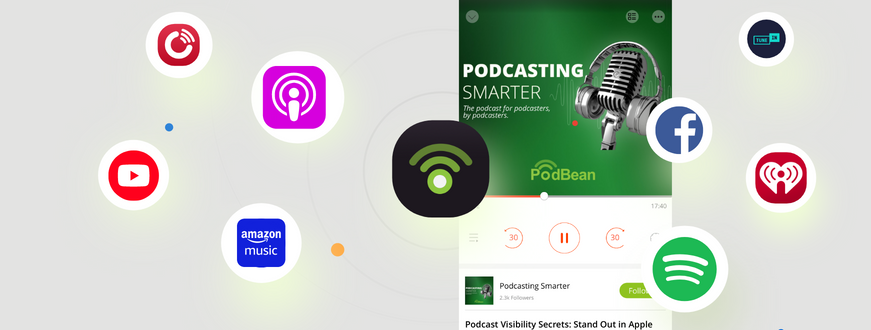
Here are the steps for getting listed in the top two major podcast directories.
Submit Your Podcast to Apple Podcasts
Apple Podcasts is one of the largest and most influential podcast directories, with over 28 million active users globally and a dominant share of the podcasting market. With Podbean, the process of getting listed is streamlined and simple, allowing you to quickly submit your podcast to Apple Podcasts .
Steps to submit:
-
Get Ready for Submission
Make sure your podcast has:
- A unique title and clear description
- A logo (1400x1400 to 3000x3000, JPG or PNG)
- At least one relevant category
- At least one published episode
- A selected language
-
Submit with One Click
- Go to Dashboard > Distribution > Podcast Apps > Apple Podcasts
- Set your content rights and update frequency
- Agree to Apple’s terms
- Click “Submit to Apple Podcasts”
Once approved, you’ll receive your Apple Podcasts link via email, and it’ll also appear on your podcast page.
Submit Your Podcast to Spotify
Spotify has become a leading platform for podcast discovery, boasting over 640 million monthly active users worldwide as of 2025 . In the U.S. alone, approximately 42.4 million people listen to podcasts on Spotify.
You can submit your Podbean-hosted podcast to Spotify directly through your Podbean dashboard.
Steps to submit:
-
Go to Distribution Settings
From your > Podcast Dashboard , go to Distribution > Podcast Apps , then click “Add” next to Spotify. -
Make sure that your podcast meets the following
conditions:
- Have a podcast title and podcast description.
- Upload an original podcast logo, square, between 1400 x 1400 to 2048 x 2048 pixels , in JPG or PNG format.
- Add at least one podcast category.
- Published at least one episode (MP3 audio files only) .
-
Agree to Terms
Accept Spotify’s terms and conditions. -
Submit
Once accepted, your podcast will be submitted. You’ll get an email with your Spotify podcast link when it’s live.
Other Directories and Full Distribution List
Podbean also supports submission to other major directories including: YouTube , Amazon Music, iHeartRadio, PlayerFM, Listen Notes, Podchaser, and Boomplay.
8. Grow Your Audience and Show
To build a loyal listener base and increase your podcast’s visibility, you’ll need to actively promote it and engage with your audience. Podbean provides a wide range of tools and strategies to help you promote your podcast , increase downloads, and make a lasting impact.
Tips and Strategies to Grow Your Show
1. Share Your Podcast on Social Media
Use platforms like Facebook, LinkedIn, YouTube, and others to promote your episodes, engage with your audience, and grow your listener base.
For detailed instructions on how to share your podcast to social media, check out this guide on sharing your podcast . Additionally, you can explore more social media resources in this section on social media tips .
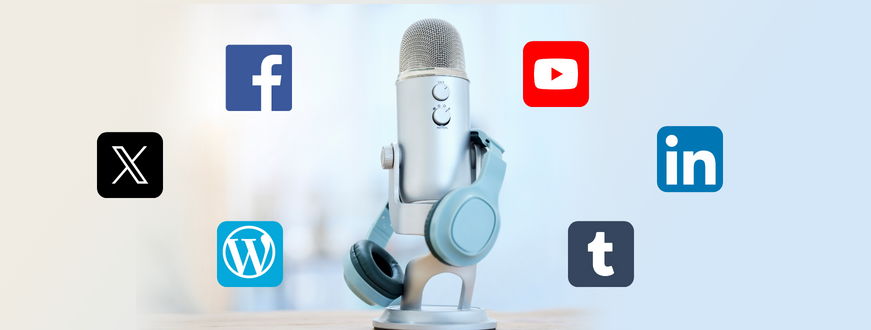
2. Establish Your Website
A website is the go-to place where listeners can find links to all your podcast directories, social media, email sign-ups, and episodes with just a few clicks.Your website is the perfect spot for hosting your media kit and other promotional materials.
3. Utilize Embeddable Players
Podbean’s embeddable players allow you to place your episodes directly on your website, removing barriers between your listeners and your content. By customizing the player and playlist, you can increase engagement and make your podcast more accessible to visitors on your site.

4. Be Consistent with Your Release Schedule
One of the most important elements of building a podcast audience is consistency. Whether you release weekly, biweekly, or monthly, stick to your schedule. Consistent publishing builds trust with your audience and helps establish a loyal listening habit.
5. Engage with Your Community
Joining online groups and forums for podcasters helps you grow your community and find promotion opportunities. Platforms like Podbean's Facebook group and Reddit's r/podcasting subreddit allow for self-promotion and cross-promotion with other podcasters.
Podbean Promotion
Podbean offers a range of promotional tools to help you grow your podcast and reach a larger audience.
You can advertise your podcast with options like banner ads on the app's homepage and featured placements in episode players, increasing visibility among active listeners.
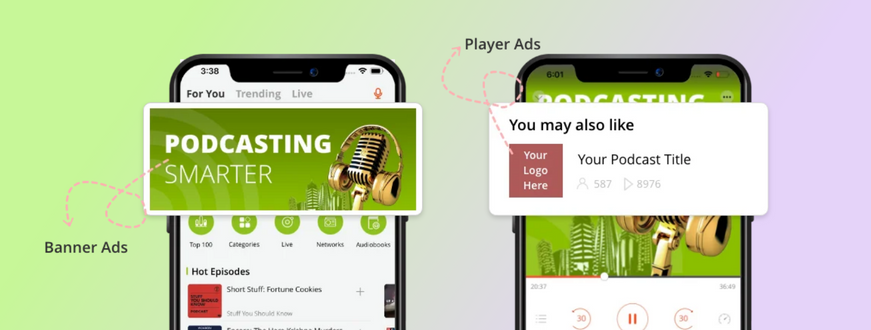
9. Track and Analyze Performance
Analytics provide valuable insights into listener behavior, engagement, and trends, helping you make data-driven decisions to grow your podcast effectively. By monitoring key metrics, you can identify what’s working and what needs improvement, ensuring your content resonates with your audience.
Podbean’s Stats Features
Podbean offers a comprehensive analytics dashboard that helps you track your podcast’s performance across various platforms. With Podbean’s robust statistics tools , you can access detailed data on your episodes, listener demographics, and trends.
Key features include:
- Total Downloads: See how many times each episode has been downloaded and track trends over time.
- Geographic Statistics: Discover where your listeners are located, allowing you to tailor content for specific regions.
- Platform Insights: Understand which platforms your audience is using to listen to your podcast.
- Engagement Metrics: Analyze listener retention and engagement to learn which episodes hold their attention the longest.
Podbean Tip: Don’t just track numbers—use your analytics to guide decisions.
Frequently Asked Questions (FAQ)
1. Do I need professional equipment to start a podcast?
Not at all. You can start with just your smartphone and a pair of earbuds using the Podbean app. As your show grows, you can upgrade to a USB microphone and headphones for better audio quality.
2. How much does it cost to start a podcast with Podbean?
Podbean offers a free plan to get started, which includes hosting, basic analytics, and access to the Podbean app’s recording features. We also offer affordable hosting plans with more storage, advanced analytics, monetization tools, and more.
3. Can I record and edit my podcast directly in the Podbean app?
Yes! The Podbean app lets you record solo or with guests, trim audio, add background music, and publish episodes directly — all from your phone.
4. Can I invite guests or co-hosts to record with me remotely?
Definitely. With Podbean’s Group Recording and Live Stream feature, you can invite up to 9 participants to record together from anywhere.
5. Do I own my content?
Absolutely. You retain full ownership of your content when using Podbean. We just help you share it with the world.